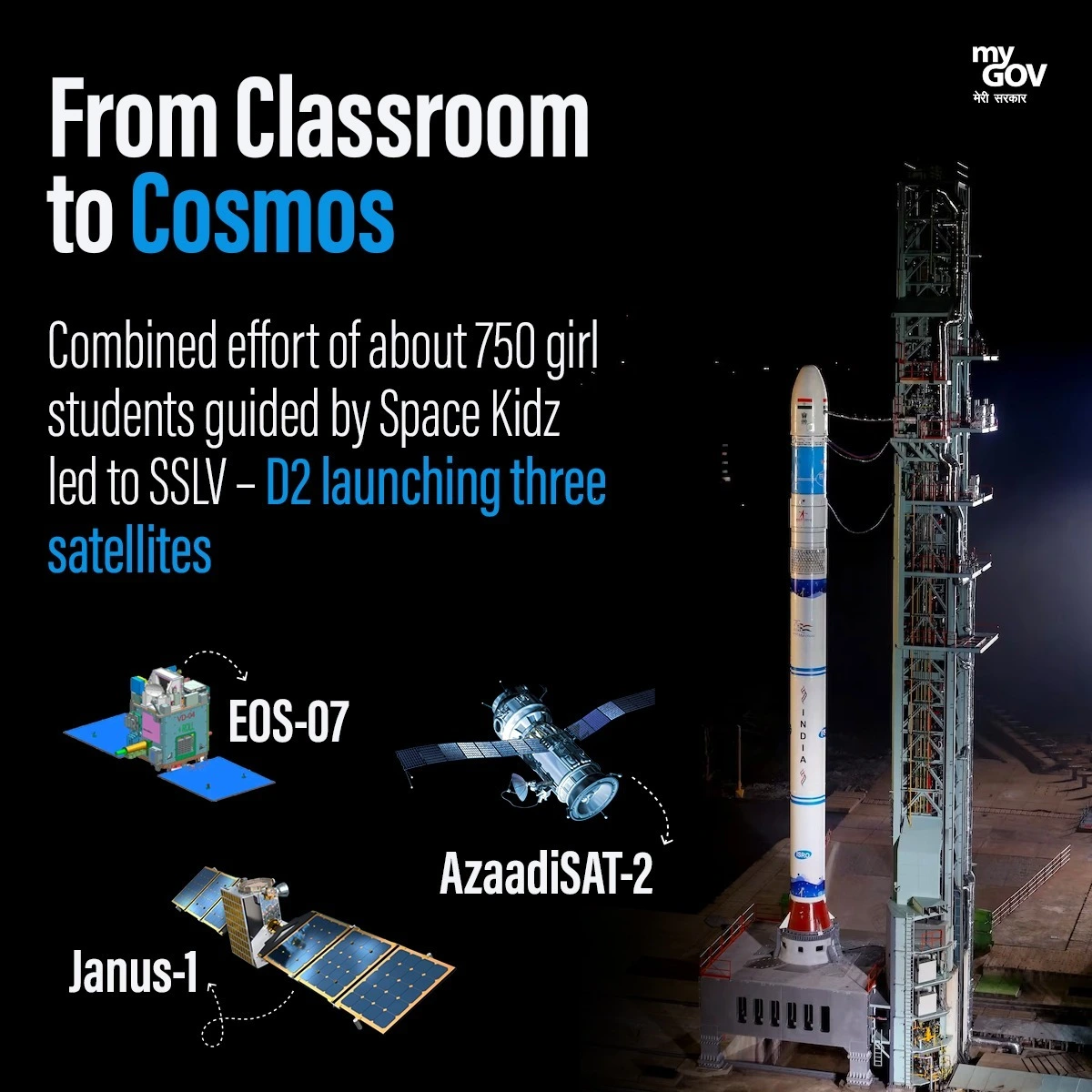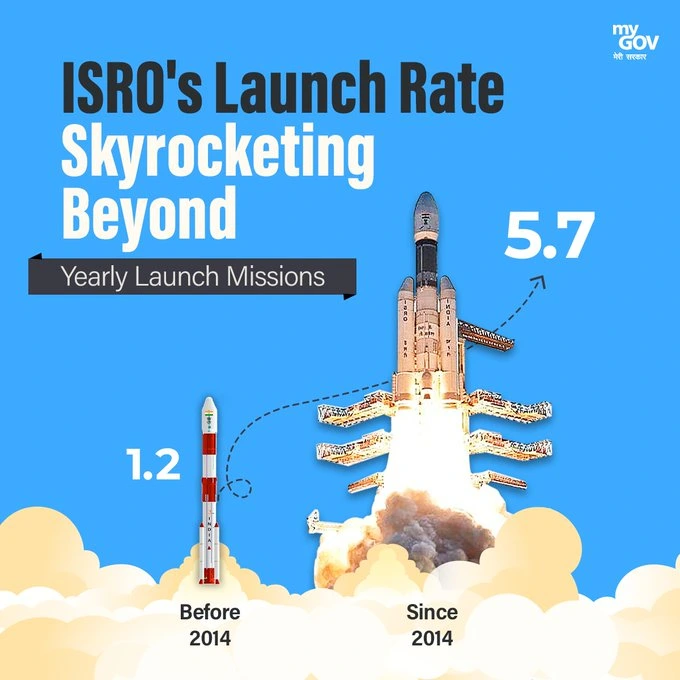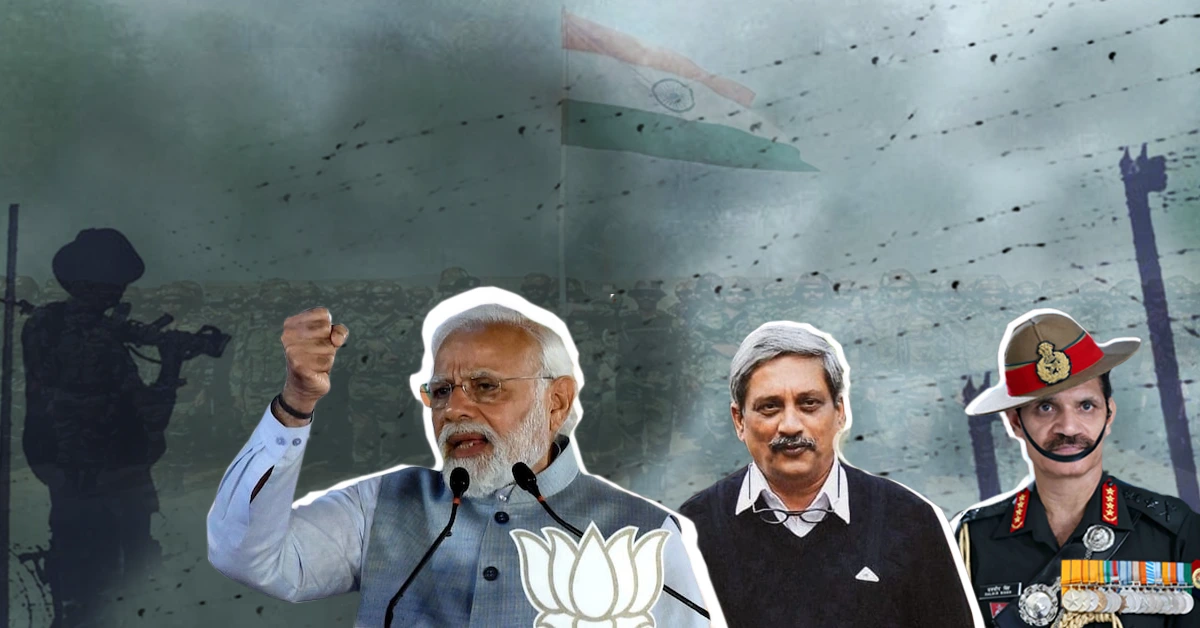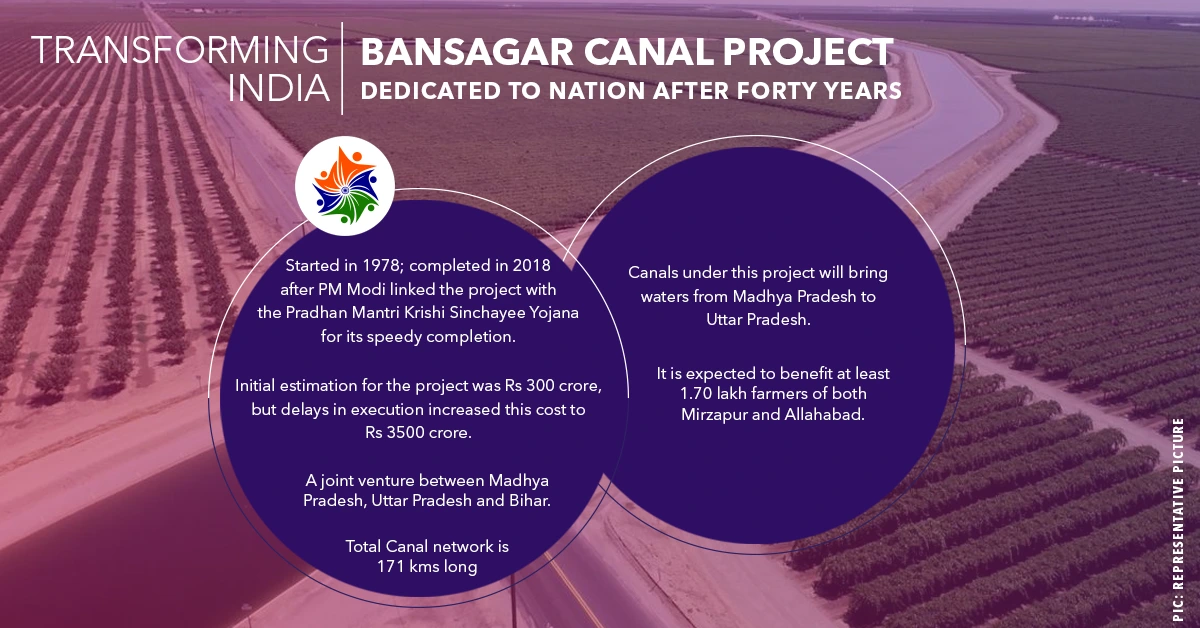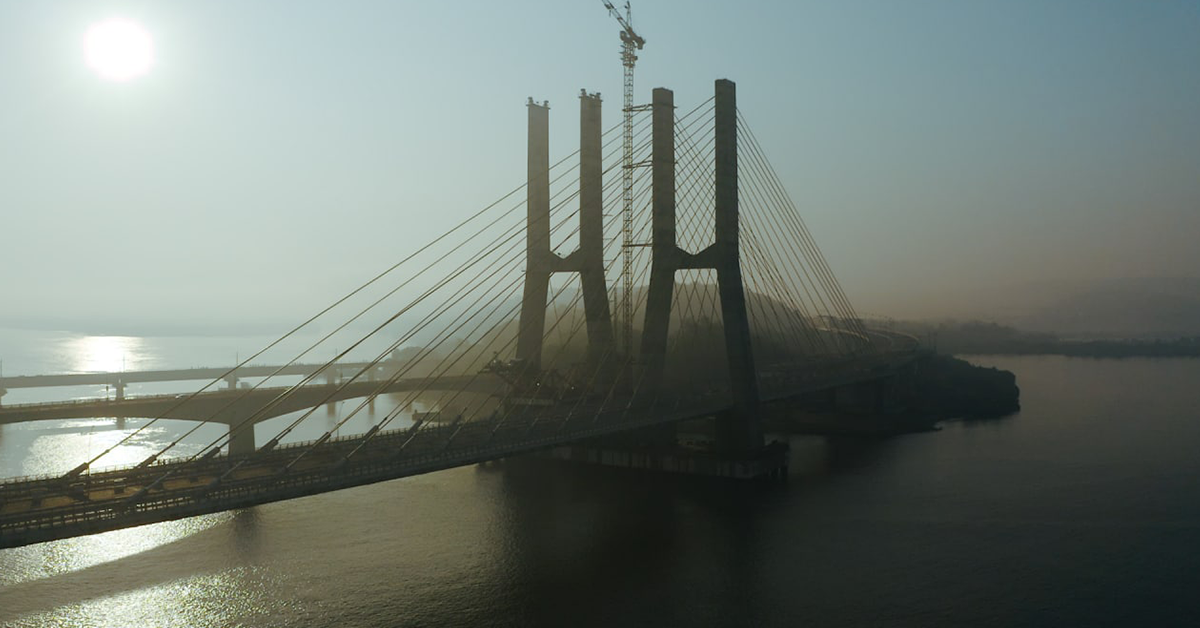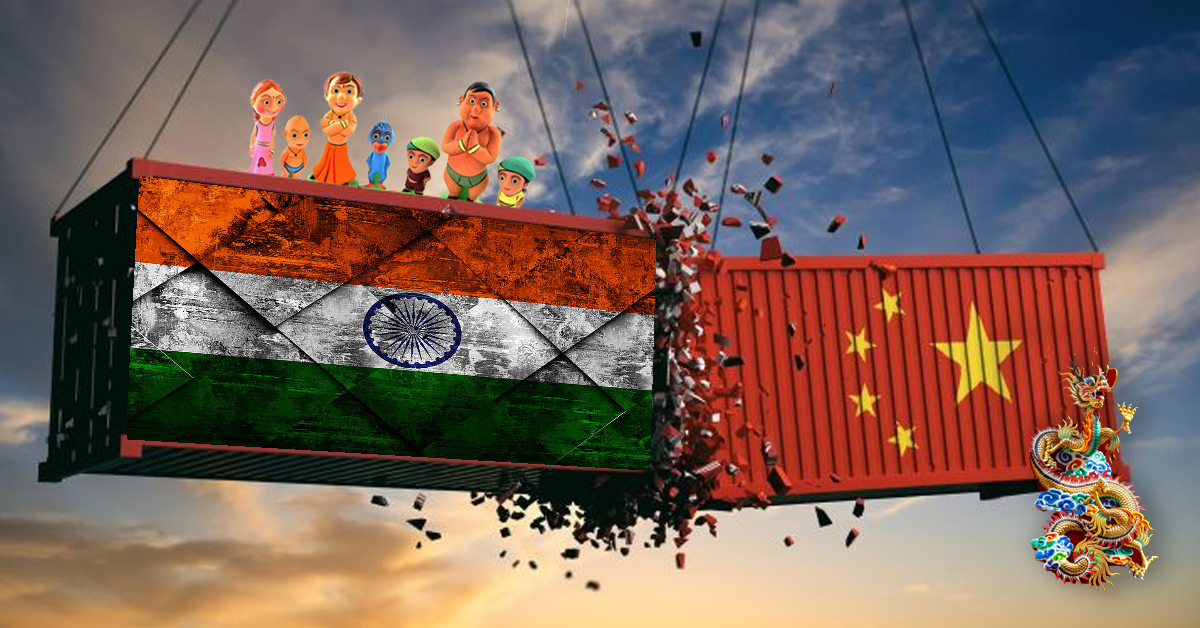Prime Minister Narendra Modi’s approach towards national security has been truly transformative. The Surgical Strikes were the first display of political resolve after years of indecisiveness in dealing firmly with threats.
India's Space Journey Under Narendra Modi
Under Narendra Modi’s visionary leadership, India’s space achievements have surged. From Chandrayaan-3 to strategic successes like Mission Shakti, his support revitalized India’s space sector. Modi’s focus on private partnerships and innovation ignited growth, as seen in skyrocketing startup numbers and investments. India’s ascent in space technology under his guidance marks a transformative leap towards global recognition.
Read Time: 17 minutes
Neglected Dreams: When the dream of Chandrayaan-2 first sprouted, it wasn’t just a mission to the moon; it was a manifestation of India’s indomitable spirit and its pursuit of excellence. But as the mission gathered momentum, a stark reality emerged. The Congress—the custodians of the nation’s treasury seemed blind to the magnitude of what could be achieved. In the annals of India’s journey to the stars, a chapter remains etched—the tale of how Chandrayaan-2 was tethered by a threadbare budget and a lack of visionary support. The Congress-led UPA government, in charge of the nation’s resources, left ISRO waiting for the funds necessary to build a lander and rover for the Chandrayaan-2 mission. This memory serves as a poignant reminder that it takes the alignment of dreams, resources, and visionary leadership to bridge the gap between Earth and the stars. The Congress tenure lingers as a painful ache—an ache born of missed opportunities, unfulfilled dreams, and a history of untapped potential.
The Congress years saw only incremental progress and a lack of comprehensive vision for the expansion of India’s space sector. During this period, India’s space endeavors primarily centered around a handful missions, without a broader strategy for advanced research, satellite technology, and international collaborations. In comparison, post-2014, Narendra Modi demonstrated a stronger commitment to the growth of the space sector, leading to many pioneering missions and societal benefits. Modi’s strategic initiatives have elevated India’s status as a global player in the space arena, marked by monumental achievements and a forward-looking approach.
The Difference in Numbers: Under Prime Minister Narendra Modi’s leadership, the budget allocated for space witnessed a remarkable surge of 123%, soaring from ₹5,615 crore in 2013-14 to ₹12,543 crore in 2023-24. A profound shift is evident in the landscape of Indian space startups as well, with a staggering $119 million flowing into these ventures in 2022 alone, a significant leap from a cumulative $38 million before 2017. Further, out of $174 million earned, $157 million came in the last nine years under the Narendra Modi government and similarly, out of €256 million earned so far, €223 million came during the nine years of the Modi regime. The Modi regime has driven a remarkable turnaround, contributing approximately ₹3,300 crore so far. The momentum is poised to continue, with projected investments exceeding $300 million in the Space Tech sector for 2023. Currently representing just 2% of the $360 billion global space economy, India under Narendra Modi envisions a remarkable boost, targeting a significant 9% share by 2030.
Many numbers paint a bright picture of India’s progress under Narendra Modi. Post-2014, India unleashed a relentless launch spree, propelling 389 satellites into orbit, dwarfing the mere 35 launched before that period; of which a meagre 24 were launched under the Congress’ UPA government. The launch missions nearly quintupled from a yearly 1.2 launches pre-2014 to an impressive 5.7 since then. Notably, the surge extends to student satellites, with ISRO’s launch count rising from 4 to 11 since 2014.
PM Modi’s clarion call and the Startup India scheme of 2016 catalyzed a seismic shift, ushering in nearly 150 private startups collaborating with ISRO. Startups like Agnikul established India’s inaugural private-run launch pad, exemplifying a new era of private participation. The maiden private-built rocket launch by Skyroot Aerospace in 2022 stands as a testament to this paradigm shift.
The space sector witnessed a burgeoning expansion from 21 space tech startups in 2020 to a staggering 146 in 2023, as private players leveraged opportunities presented by the sector’s opening for private and foreign partnerships. This surging momentum is mirrored by private players supplying 85% of LVM3 components, and over 400 industries partnering with ISRO across launchers, spacecraft, and ground systems.
Even when it comes to the academic field, technical institutes in the country have 100% placements for students and about 50% of them go to the NASA to pursue higher studies.
Under Prime Minister Modi’s stewardship, India’s journey through space has experienced a transformative leap, positioning the nation shoulder to shoulder with global space pioneers. Today, India commands a leading role in the world of space exploration, offering sought-after satellite launch services to countries that once embarked on their own space journeys ahead of us.
Unleashing Innovation and Ambition: One of the hallmarks of Modi’s tenure has been the emphasis on fostering innovation and ambition. The launch of the “Make in India” campaign and the opening up of the space sector for private partnership reinvigorated domestic manufacturing capabilities, leading to the creation of cost-effective satellite production and launch vehicles. This initiative not only reduced dependency on foreign technology but also spurred the growth of indigenous capabilities.
In 2020, India’s new space policy, led by Prime Minister Modi, opened the doors to private investment in the space sector. This policy allowed private access to space assets developed by ISRO. The Indian National Space Promotion and Authorization Center (IN-SPACe) was established to facilitate private sector participation, enhancing space-related activities. Additionally, under Modi’s guidance, India aims to boost its private space companies’ global launch market share by fivefold in the next decade.
India’s collaboration with the US-led Artemis program adds to its space exploration ambitions. The program focuses on lunar missions and India’s role includes providing launch vehicles and support services. The country is also working with the US on a framework for human spaceflights, with plans for an Indian mission to the International Space Station in 2024.
Modi’s decision to open up India’s space sector for private partnership has ignited a transformative wave of innovation and progress. Private endeavors and collaborative initiatives alike are set to shape the space sector’s trajectory in the upcoming years. By encouraging collaboration between ISRO and private players, Modi has unlocked new avenues for technological advancement and economic growth. Today. the space sector has emerged as a significant contributor to the Indian economy, generating revenue through satellite launches, communication services, and technology exports.
Beyond rocket launches, India’s space sector is today empowering the nation through development of space technologies, applications, and services. This inclusivity aligns with Modi’s vision of fostering innovation and promoting self-reliance, aligning space advancements with the larger goal of transforming India into a global powerhouse.
Promoting Space-based Applications: Recognizing the potential of space technology in solving real-world challenges, Modi championed the development of space-based applications. Satellite imaging ushered in a transformative era across various sectors in India. By enabling swift response to poor harvests, it has revolutionized crop monitoring. Additionally, its prowess in weather forecasting has proven invaluable in detecting and managing major storms. The spectrum of space technology applications extends to development, infrastructure, and disaster management. Over 10 million assets are meticulously tagged under Geo-MNREGA, while housing schemes like Pradhan Mantri Awaas Yojana are under vigilant surveillance. Critical aspects such as integrated watershed management, renewable energy assessment, and village water bodies are subjected to rigorous monitoring. Moreover, the adeptness of space technology comes to the forefront in managing the impact of droughts, floods, and cyclones. This technological journey yields direct benefits for sectors ranging from agriculture, railways, and smart cities to water mapping and more. Furthermore, the influence of space innovations extends to fields as diverse as defense and healthcare, amplifying their efficacy. Prime Minister Modi’s pronounced emphasis on the pragmatic application of space technology, especially in agriculture, defence and disaster management, underscores his commitment to harnessing the immense potential of space for societal advancement on a global scale.
Pioneering Missions: The success of the Mars Orbiter Mission (Mangalyaan) in 2014 marked India’s first interplanetary foray, making the country the first in the world to succeed on its maiden attempt. India became the first Asian nation to reach the Mars orbit and ISRO became the fourth space agency to reach Mars, after the Soviet space program, NASA, and the European Space Agency. Many such missions under Narendra Modi’s leadership have captured global attention.
Since 2014, India’s space journey has been marked by significant achievements. The launch of GSLV Mk III in 2014 introduced India’s heaviest and most powerful launch vehicle, paving the way for heavy satellite deployments and interplanetary missions. A groundbreaking moment came in 2015 with the launch of Astrosat, an advanced space observatory equipped with cutting-edge telescopes that expanded our understanding of the cosmos.
The years that followed were equally impactful. ISRO’s Scramjet engine milestone in 2016 propelled advancements in reusable launch vehicles and flight duration extensions through RLV-TD trials that continue till today.
In an unprecedented feat, ISRO’s launch of 104 satellites in 2017, including 101 international payloads, showcasing India’s technological prowess. India’s space accomplishments extended to strategic endeavors, as highlighted by the successful Mission Shakti in 2019, demonstrating the nation’s anti-satellite missile capabilities. With this India became the fourth country, after US, China and Russia, with the capability to destroy a low-orbit satellite.
The year 2019 marked the launch of Chandrayaan-2, a landmark lunar mission designed to explore the Moon’s surface, particularly the south pole region. Additionally, the success of Chandrayaan-3 is another one of many straws in the wind showing its ascendence. This achievement will create several ripple effects, which will continue to accentuate India’s growing influence and reputation as a technological powerhouse on the global stage. The success goes above and beyond the scientific and engineering achievements it is intended to accomplish for the nation. Multiple aspects, including geopolitics, soft power diplomacy, rekindled public interest in science and technology, and the potential for driving investment in the space sector, will see a positive impact in the coming years. Further, the mission will cultivate a new generation of scientists, engineers, mathematicians, artists, and other professionals in the coming years. Moreover, the marked shift in approach under the visionary leadership of Prime Minister Narendra Modi, who prioritized and invigorated India’s space sector, stands in stark contrast to the neglectful attitude of the Congress, which failed to harness the potential of this critical domain for years.
ISRO’s future missions hold immense promise, featuring the Aditya L1 for solar atmosphere study, Gaganyaan tests for human spaceflight, Shukrayaan’s Venus exploration, and more. Private entities like Agnikul Cosmos and Skyroot Aerospace have ambitious plans for orbital and suborbital tests, poised to elevate the spotlight on the space sector in the coming months and years. ISRO’s exciting future also includes the NASA-ISRO Synthetic Aperture Radar (NISAR) launch next year. Collaboratively, ISRO and JAXA will launch LUPEX (Lunar Polar Exploration) in 2026, marking a new chapter in their joint space exploration efforts.
During these years, India’s space journey witnessed several key milestones. The IRNSS satellites, including IRNSS-1B, 1C, 1D, and 1E, bolstered the Indian Regional Navigation Satellite System, enhancing navigation capabilities and reducing reliance on foreign systems. The NAVIC satellite constellation made significant strides in precise positioning and timing, adding to India’s navigation prowess. RESOURCESAT-2A, equipped with a three-tier imaging system, revolutionized Earth resource monitoring for applications such as agriculture and urban planning. SCATSAT’s launch elevated disaster management and marine research capabilities, enabling advanced cyclone tracking and ocean studies. INSAT-3DR transformed weather updates with frequent monitoring, delivering weather information every 15 minutes. GSAT-9, known as the South Asia Satellite, played a crucial role in providing communication and disaster support to SAARC countries, reflecting Narendra Modi’s commitment to regional cooperation. Cartosat-2E, a high-resolution Earth observation satellite, enriched India’s mapping capabilities. GSAT-6A aimed to enhance mobile communication through multi-beam coverage. The launch of HysIS, Kalamsat-V2, and RISAT-2B introduced advanced technology and innovation to the space sector. In subsequent years, India’s achievements continued to soar. GSAT-30 replaced INSAT-4A, EOS-01 entered Low Earth Orbit for earth observation, and CMS-01 expanded communication capabilities. The launch of PSLV C51/Amazonia-1 and UNITYsat further demonstrated India’s growing presence. RISAT-1A’s introduction in 2022 bolstered flood mapping, agriculture, and border security efforts.
Under the visionary leadership of Prime Minister Narendra Modi, India’s space endeavors have reached unprecedented heights, with achievements spanning from launching record-breaking satellites to conducting pioneering missions. This trajectory reflects not only India’s scientific and engineering capabilities but also underscores how steadfast support and visionary guidance from leadership can be a driving force behind such remarkable success.
Conclusion: India is on the moon, and a nation is over the moon.
After many years, India is experiencing a new era of leadership. Unlike past instances of empty promises under the Nehru-Gandhi family, Narendra Modi stands out by not just proposing new ideas but implementing and executing them successfully. The nation’s progress in the space sector over the past nine years under the Modi government is undeniable. From satellite construction and launching to telecommunications and terrestrial observation, India has made significant strides. This surge in achievements places India at a higher echelon in the global space race. Thanks to Narendra Modi’s leadership, there’s a palpable sense of anticipation, positivity, and ambition as India rises from the shadows of its colonial past, setting forth on a confident path toward its destiny.
Narendra Modi’s tenure as Prime Minister has ushered in a new era of growth and recognition for India’s space sector. His strategic initiatives, commitment to innovation, and emphasis on global collaborations have propelled India to the forefront of space exploration. The accomplishments achieved under his leadership not only signify remarkable achievements in the field but also contribute to the nation’s overall progress and global stature. As India continues to set its sights on even loftier goals in space, it does so with a newfound confidence and determination, thanks to the transformative impact of Narendra Modi’s vision.
Tags: The New India
Share this article:
Leave a Comment
Recommended For You
Under Narendra Modi's visionary leadership, India's space achievements have surged. From Chandrayaan-3 to strategic successes like Mission Shakti, his support revitalized India's space sector. Modi's focus on private partnerships and innovation ignited growth, as seen in skyrocketing startup numbers and investments. India's ascent in space technology under his guidance marks →Read More →
The Bansagar Canal Project, which was dedicated to the nation by Prime Minister Narendra Modi, 40 years after its conceptualization is expected to benefit 1.70 lakh farmers from Mirzapur and Allahabad.
In a historic moment for India, Prime Minister Narendra Modi flagged off MV Ganga Vilas, the world's longest river cruise which makes a journey through India and Bangladesh, showcasing the rich heritage and culture of both countries.
India's widest and second largest cable-stayed bridge in India, the Zuari bridge in Goa will enhance the economic activity of the state.
India's first semi-high speed train, the Vande Bharat Express, was launched by Prime Minister Modi on 15 February 2019. The train offers Indian travelers a myriad of superior amenities and provides passengers with aircraft like travelling experience.
The first ever aircraft carrier to be indigenously designed and constructed, the much-awaited INS Vikrant was launched by Prime Minister Narendra Modi on 2 September 2022.
Today, a much-needed government boost to the global imprint of Indian toys is evident from Modi government’s emphasis on bringing in transformative changes in the domestic toy industry by promoting “Vocal for Local" and “Make in India" under the Aatmanirbhar Bharat scheme. India under Narendra Modi has made a beginning →Read More →
The Bogibeel bridge over the Brahmaputra will boost defence logistics along the China border and increase the economic activity of the long-time neglected Northeast region.
As the IECC opens its doors to the world, it ushers in a new era of possibilities, propelling India towards greater economic growth, development, and recognition as a leading force in the international arena. With its grandeur and vision, the IECC stands tall as a symbol of India's aspirations to →Read More →





